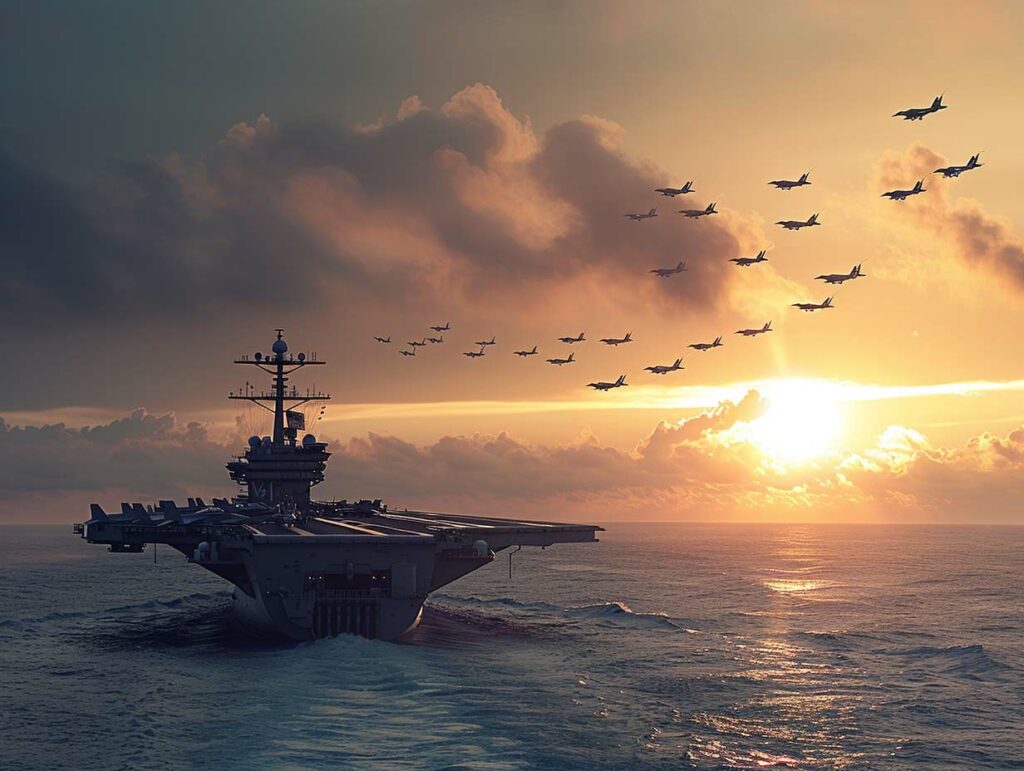
Analysis of separate US Air Force and Navy budgets in the face of potential conflict with China, highlighting divergent priorities.
Defense strategy context
The US Air Force and Navy, guided by the same National Defense Strategy, are preparing for a potential confrontation in the Pacific against China, possibly within the next few years. This uncertain timetable overlaps awkwardly with a mountain of modernization priorities for each service. Faced with budget caps for fiscal years 2024 and 2025, the two services have responded with very different budget strategies.
Differences in budgetary approaches
For fiscal year 2025, the Air Force is proposing a €1.6 billion reduction in its acquisition account compared with the previous year, while increasing spending on research, development, test and evaluation by almost the same amount. In the process, the Air Force plans to reduce its purchase of fighter jets by 12 units. On the other hand, the Navy, while managing an armed conflict in the Red Sea, is seeking to increase its presence in the Pacific region to deter China. It has prioritized funding for current operations and personnel in its FY2025 budget request. Procurement spending remains stable, while research and development is down 5%.

Advantages and disadvantages of Air Force approaches
Advantages:
- Prioritizing R&D can lead to innovations that will keep the Air Force technologically ahead of its adversaries.
- Investment in next-generation technology could produce more effective combat systems in the long term.
Disadvantages:
- Reducing immediate purchases of combat aircraft may compromise the Air Force’s ability to respond to short-term threats.
- Heavy reliance on future technology may prove risky if these technologies are not developed in time or do not meet operational expectations.
Potential consequences for the Air Force
If a conflict with China erupts in 2027, the Air Force may not have future systems such as the Next Generation Air Dominance (NGAD) program in time, and may also lack the quantity of fifth- and fourth-generation fighters needed in these scenarios. This could lead to a lack of operational readiness at a critical time.
Navy approaches and their implications
Benefits:
- Maintaining priority on current operations and personnel ensures that the Navy remains ready to respond immediately to any crisis.
- A focus on maintenance and rapid software upgrades can increase the efficiency of existing platforms.
Disadvantages:
- Delayed fleet modernization can reduce the Navy’s ability to project itself as a dominant force in the future, particularly if new challenges emerge.
- Budget cuts affecting new purchases and R&D may limit the development of advanced technologies and capabilities.
Long-term consequences for the Navy
Current budget decisions may jeopardize the Navy’s future readiness, particularly if conflicts expand or adversary technologies evolve faster than anticipated. Reliance on older platforms without introducing new capabilities may also reduce overall operational effectiveness.
The divergent strategies of the US Air Force and Navy reflect different bets on the future of national security. These decisions have profound implications for America’s ability to maintain a technological and operational edge against adversaries like China.
War Wings Daily is an independant magazine.